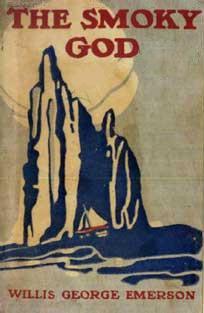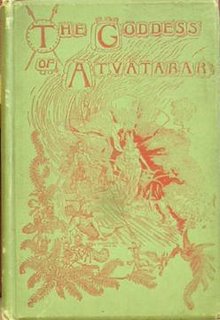In the 1970's - the edition gives no date, ufologist and fortean Gene Duplantier of Ontario, Canada, issued a booklet entitled Subterranean Worlds Of Planet Earth. It was an anthology of cutting edge, avant-garde and far-out irrationalist thinking of the time on the subject.
As such, the booklet contained the following articles:
- The Western Sky, by Michael Watson.
- Alabama Cave Monsters, by Peter and Paul Bleckinger.
- Hollow Earth? Underground Races? by Paul Doerr.
- Theory Or Reality? by Charles Wilhelm.
- Caves, Caverns And Catacombs, by Gene Duplantier.
- The Facts Behind The Tales, by Richard Shaver.
We know what fate befell Shaver, but what about the others?
Paul Doerr published his own newsletter titled Unknown, according to this entry:
"Paul Doerr , in issue number 6 of his Newsletter Unknown, related the tradition concerning a race of human giants which, according to stories in the Carolinas islands and especially Papua, allegedly went underground in ancient times. Once inhabitants of a lost island-continent called "Chamat," they will, according to legend, one day emerge. This legend is wide-spread throughout Malaysia,..."
The account above was lifted from The Guide To Inner Earth by Bruce Walton, which was published in 1983. In it Walton remarks: "Doerr, Paul - UNKNOWN Newsletter (no longer published)., Issue No. 6..."
I also found a fleeting reference to the Bleckinger brothers in an issue of early contactee Daniel Fry's magazine Understanding, March 1969, Vol XIV, Nr. 3, pages 19-20:"Paul Doerr , in issue number 6 of his Newsletter Unknown, related the tradition concerning a race of human giants which, according to stories in the Carolinas islands and especially Papua, allegedly went underground in ancient times. Once inhabitants of a lost island-continent called "Chamat," they will, according to legend, one day emerge. This legend is wide-spread throughout Malaysia,..."
The account above was lifted from The Guide To Inner Earth by Bruce Walton, which was published in 1983. In it Walton remarks: "Doerr, Paul - UNKNOWN Newsletter (no longer published)., Issue No. 6..."
"A rare treat is promised all who attend the lecture sponsored by our Buffalo Unit 37 on April 11th, at the International Institute, 1260 Delaware Avenue, Buffalo, New York. Speakers will be college students Peter and Paul Bleckinger, twins, long time saucer enthusiasts. Their slide illustrated and well documented November lecture "was tremendous," according to Mrs. Maie A. Hall, President of Unit 37. If you are in the area plan to attend."
Where are these early hollow earth researchers now?



















